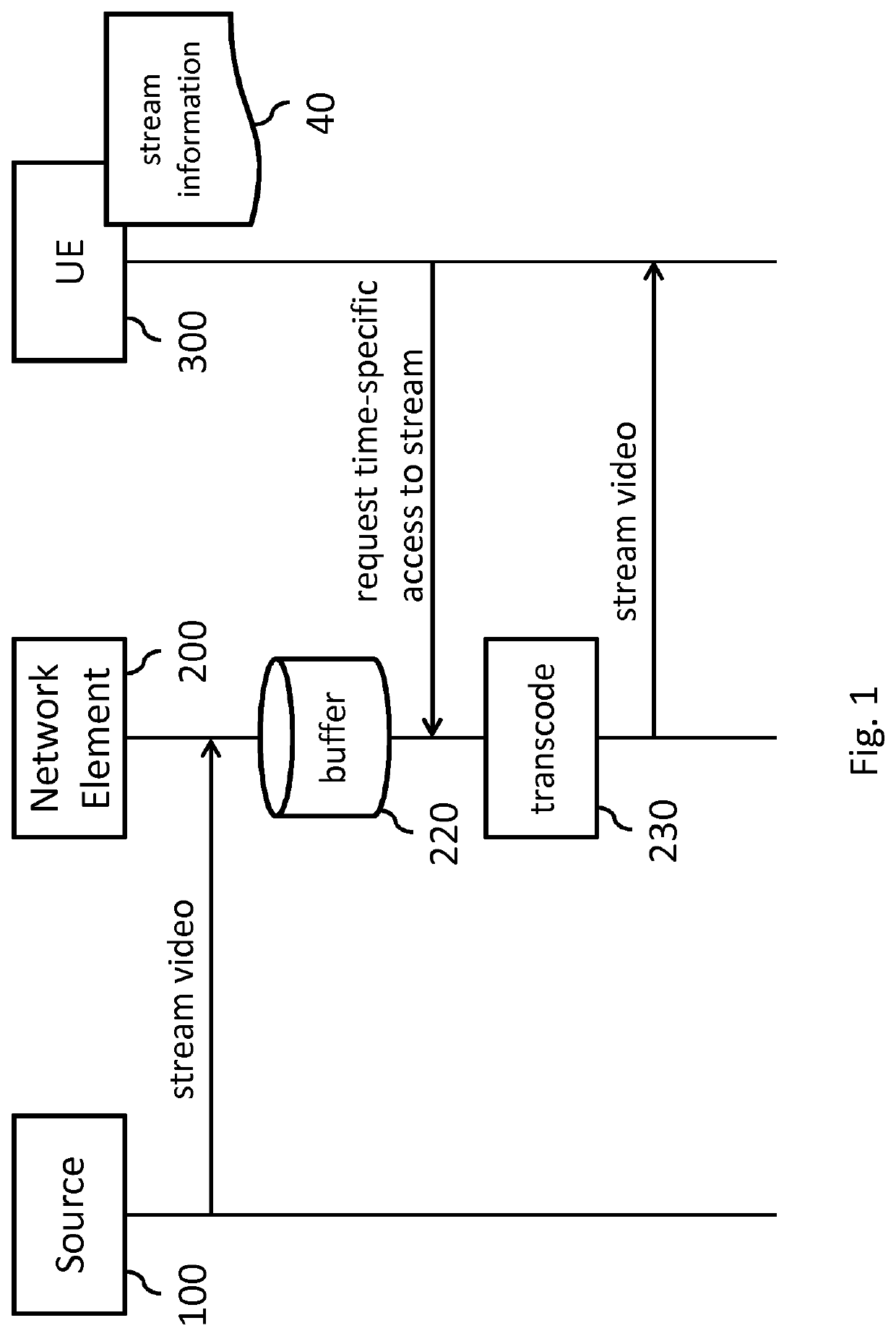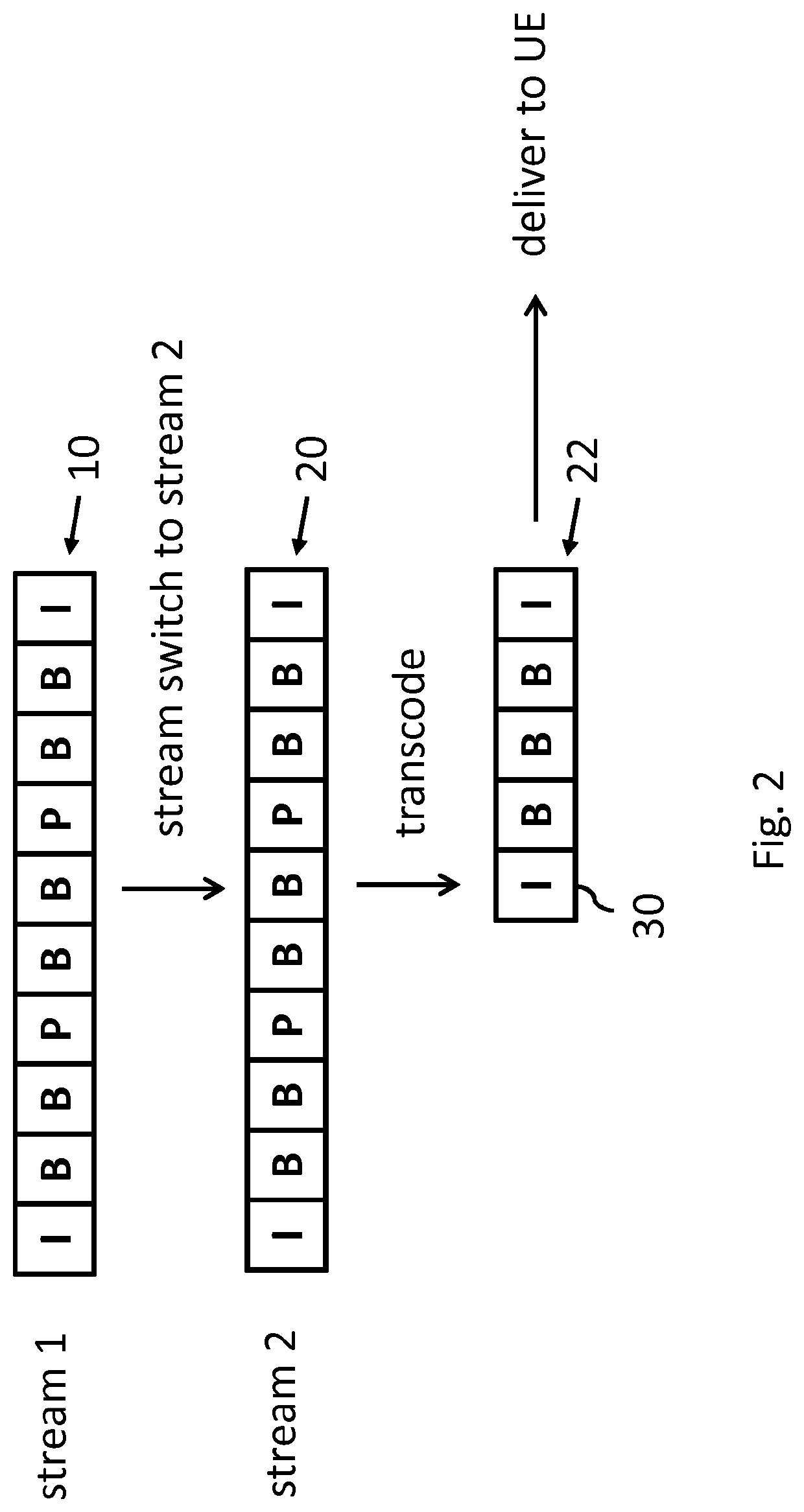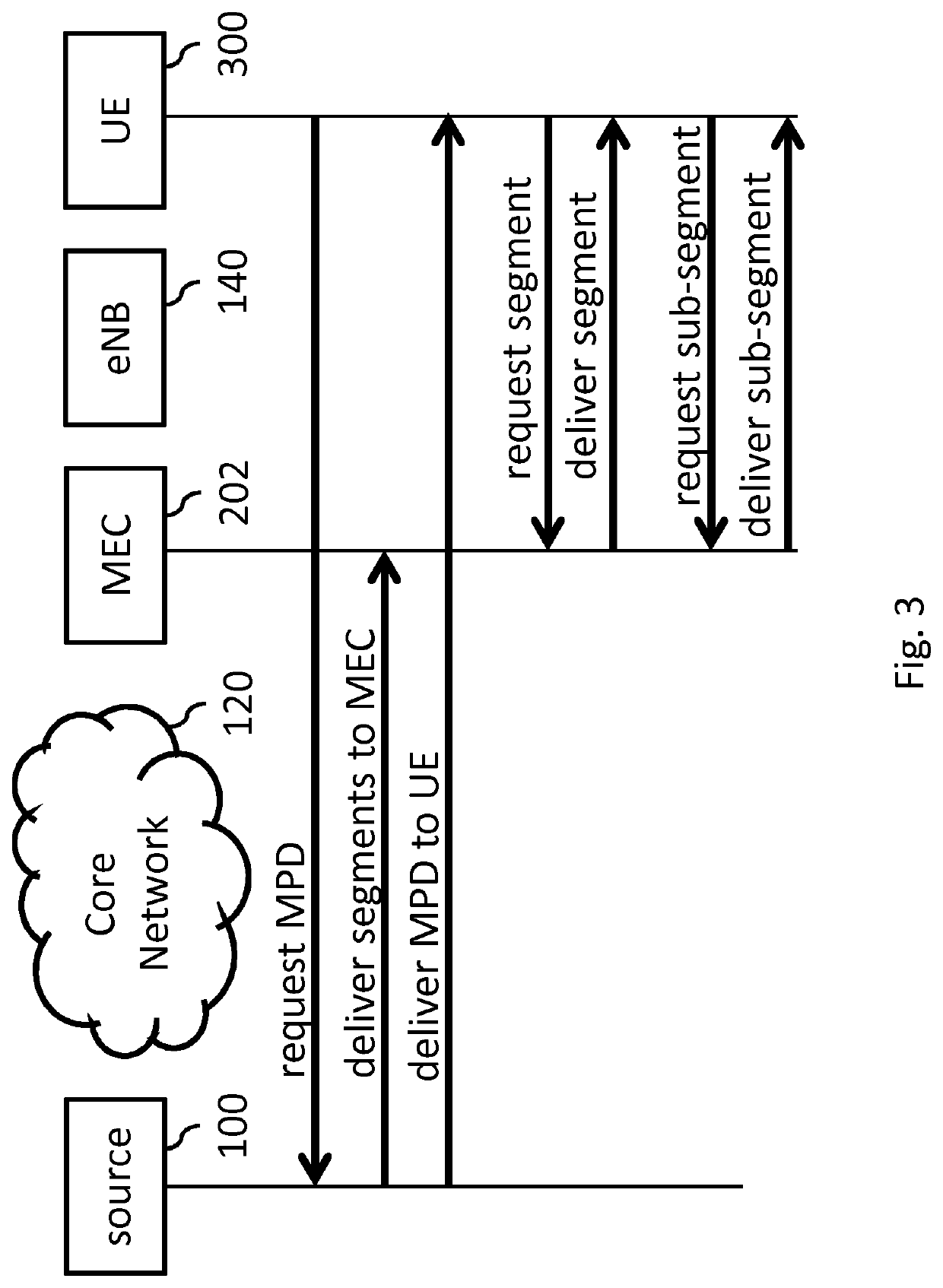Synchronizing processing between streams
a technology of synchronizing processing and streams, applied in the direction of selective content distribution, electrical equipment,pictoral communication, etc., can solve the problems of large delay between the user physically changing the viewing angle and the new view actually being rendered by the vr rendering device, and may not always be sufficiently synchronized with the processing of the first stream
- Summary
- Abstract
- Description
- Claims
- Application Information
AI Technical Summary
Benefits of technology
Problems solved by technology
Method used
Image
Examples
Embodiment Construction
[0136]The following describes several embodiments of facilitating a client device to synchronize streaming and processing a second stream to streaming and processing a first stream. Here, the client device may also be referred to as ‘user equipment’ (UE), or ‘receiver’, or in VR-related embodiments as a ‘VR device’.
[0137]The streams may be from a group of streams which are associated with a common content timeline. Examples of such streams include, but are not limited to, video streams such as those representing a VR video or a multi-camera recording. However, the streams do not need to be video. Rather, the streams may be of any other stream type which is encoded such that there are dependencies between parts of the stream, with such parts being frames or their equivalent. This includes, for example, means intra-encoded video, sometimes also referred to as intra-frame encoded video. Other examples may be point-cloud or mesh-based encoded scenes, which may also use dependencies betw...
PUM
 Login to View More
Login to View More Abstract
Description
Claims
Application Information
 Login to View More
Login to View More - R&D
- Intellectual Property
- Life Sciences
- Materials
- Tech Scout
- Unparalleled Data Quality
- Higher Quality Content
- 60% Fewer Hallucinations
Browse by: Latest US Patents, China's latest patents, Technical Efficacy Thesaurus, Application Domain, Technology Topic, Popular Technical Reports.
© 2025 PatSnap. All rights reserved.Legal|Privacy policy|Modern Slavery Act Transparency Statement|Sitemap|About US| Contact US: help@patsnap.com



